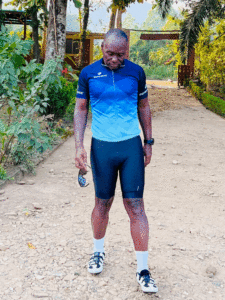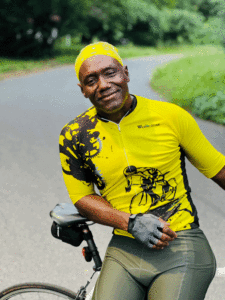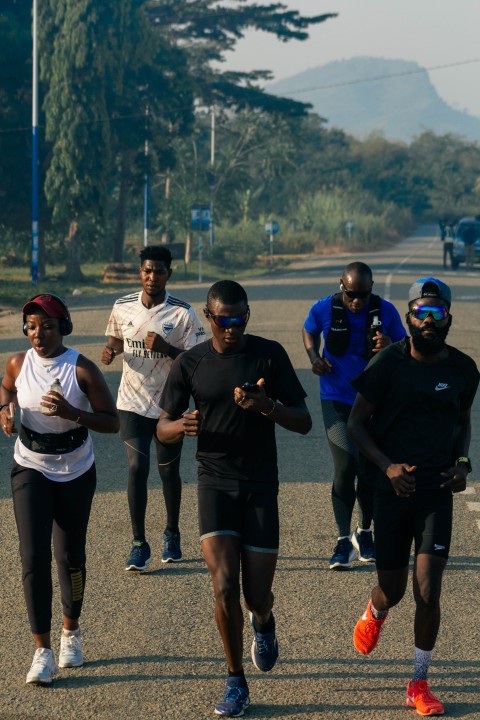adverts
Movement as Medicine: How Physical Activity Transformed My Health—Michael Amankwa’s Data-Driven Insights
Michael Amankwa, CEO of Knoxxi Limited, recently shared an inspiring personal journey on LinkedIn, detailing the transformative effects of physical activity on his overall health and well-being.
By meticulously analysing his personal data from February 2024 to January 2025, Amankwa uncovered undeniable evidence that staying active has a profound impact on vital signs, weight, sleep quality, hydration, and mental clarity.
Here are the key findings from his year-long health and wellness journey:
adverts
1. Blood Pressure: A Victory for Heart Health
Amankwa’s data revealed a clear link between physical activity and improved blood pressure.
- Running’s Impact: On days when he ran over 5 km, his systolic blood pressure averaged 118 mmHg, compared to 125 mmHg on less active days—a 6% reduction. Diastolic pressure also dropped significantly, from 83 mmHg to 78 mmHg.
- Cycling’s Role: While cycling also contributed to better blood pressure, the effects were less pronounced due to its relatively lower intensity compared to running.
Highlight: The lowest recorded blood pressure readings—116/76 mmHg—occurred on high-intensity running days, underlining the heart-health benefits of consistent cardiovascular exercise.
2. Pulse Rate: Strengthening Cardiovascular Fitness
Regular physical activity significantly improved Amankwa’s heart efficiency over time.
- On high-calorie-burning days (activities burning over 700 calories), his pulse rate averaged 68 bpm, compared to 72 bpm on lower-intensity days.
- Over the year, his resting heart rate dropped by 3-4 bpm—a clear sign of improved cardiovascular fitness and endurance.
3. Weight and Waistline: Small Steps, Big Gains
Consistent exercise also translated into measurable physical changes:
- Weight Loss: Amankwa shed 1.5 kg over the year, showcasing how regular activity aids in weight management.
- Waist Reduction: His waist circumference decreased by 1-2 cm, reflecting fat reduction and improved body composition.
4. Hydration: The Key to Performance and Recovery
Hydration emerged as a critical factor in optimising workouts and recovery.
- Water Consumption: On activity days, he drank an average of 871 ml of water, slightly less than the 881 ml on non-activity days.
- Electrolytes Matter: Drinking electrolyte-balanced water enhanced endurance and recovery, while plain water sometimes led to early fatigue or dizziness during prolonged activities.

5. Sleep: Deeper Rest Through Movement
Amankwa found that physical activity directly influenced his sleep quality.
- Morning Workouts: Improved sleep efficiency by 12%, leading to deeper and more restorative rest.
- Evening Workouts: Occasionally made it harder to fall asleep but reduced nighttime awakenings overall.
- Non-Active Days: Deep sleep decreased by 15%, leaving him less refreshed the next morning.

6. Mood and Mental Clarity: The Immediate Reward
Perhaps the most gratifying benefit of Amankwa’s active lifestyle was its effect on his mental state.
- Energy and Focus: High-calorie-burning days (>700 calories) left him feeling more energised, focused, and productive.
- Happiness Boost: Physical activity lifted his mood, reinforcing the connection between exercise and mental well-being.
Amankwa’s data-driven journey is a testament to the life-changing potential of regular physical activity. From lowering blood pressure and strengthening the heart to enhancing sleep and mood, his findings underscore the transformative power of movement.
He encourages others to take that first step toward an active lifestyle, whether it’s a walk, run, or bike ride. “The effort you put into your body today will repay you with better health and happiness tomorrow,” he concludes.



